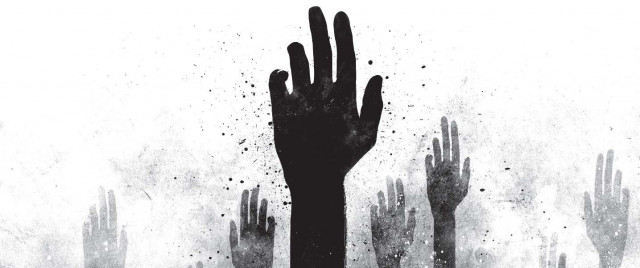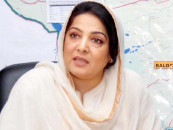Poverty a stark spectre for 79m Pakistanis: Report
Independent expert highlights startling inaccuracies in official poverty figures.

As the government continues to shy away from calculating official poverty figures, an independent expert has claimed that around 43 per cent of the population is living below the poverty line in Pakistan.
According to a study titled “Institutional Imperatives of Poverty Reduction”, by 2011-2012 as much as 43.1 per cent, or 79.1 million persons in the country will be destitute. The research was undertaken by Akmal Hussain; a professor at Beaconhouse National University and a well known expert on the topic of poverty.
The academic says his estimates are based on the elasticity of food price inflation with respect to the incidence of poverty. His research concludes that 40.7 per cent of Pakistan’s population would be classified as being ‘poor’ last year, compared to 38.5 per cent in 2009-10.
Last year, the government carried out the Household Integrated Economic Survey (HIES) which provides basic information for working out poverty numbers. The exercise has yet to produce any official numbers on poverty trends in the country.
The most recent official figures are from 2005-06, when poverty was estimated at 22.9 per cent. The Pakistan Peoples Party led government did not accept the 2007-08 HIES that projected a reduction in poverty to 17.2 per cent, and there have been no official numbers available since then.
While talking to The Express Tribune, Hussain said that his own estimates were based on certain projection, but he was confident that they did not fall too far from the mark. If poverty were to be calculated using HIES 2010-11, the number would be close or even higher than his projections, he said. Offering his services, he said that he would provide even accurate figures for the government if it was willing to provide him with the raw data.
There are reports that the Planning Commission might take him up on the offer. It is considering assigning the job either to him, or to the Pakistan Institute of Development Economics.
The paper also challenges the poverty estimates of the Musharraf regime, terming them incorrect. Instead, the study tries to establish that from 1999 to 2007-08, the incidence of poverty has increased by 3.8 percentage points from 30 percent in 1998-99 to 33.8 percent in 2007-08, with an additional 16 million people entering the category of poor over the period.
Musharraf’s government had claimed that it reduced the percentage of population below the poverty line from 34 percent in the year 2000-01, to 23 percent in the year 2004-05; that is, a reduction of 11 percentage points. This was meant to show that almost a third of Pakistan’s poverty stricken populace had been brought up within a period of four years. The author argues that if this was true, it would be one of the most remarkable economic achievements in the history of developing countries; including the Soviet Union under Stalin, and China under Mao. Even India had managed only a 10 percentage point reduction in poverty with its high average annual growth rate of 8 per cent.
The study also states that an analysis of the sources of growth, during the period 2000-01 to 2004-05, shows that the composition of growth during the period was pro-rich rather than pro-poor.
GDP growth during the period was overwhelmingly pro-rich since the sectors which contributed it were neither producing goods for the poor nor directly providing employment to them, claims the author. In fact, labour force survey data from the government shows that unemployment rates rose sharply from 6.1 per cent in 1999 to 8.3 per cent in 2004. Therefore, the nature and composition of GDP growth during this period could not be expected to have substantially reduced poverty, says Hussain.
Hussain said that the regime’s decisions to take 2001 as the base year for estimating poverty and measuring inflation on the basis of the Consumer Price Index, instead of inflation data of Pakistan Living Standard Measurement Survey (PLSM), led to the incorrect poverty estimates.
Taking the base year as 2000-01, which was plagued by bad harvests, and comparing it to the year 2004-05, which was comparatively much better, exaggerated the magnitude of poverty reduction. Similarly, the then government’s poverty estimate used an inappropriate inflation rate based on the consumer price index, which covered only 16 urban centers. It did not take into account prices in rural areas where the majority of the poor reside. Inflation rate data based on both urban and rural areas had been available with the PLSM survey but was never used, the study opines.
Published in The Express Tribune, February 22nd, 2012.



















COMMENTS
Comments are moderated and generally will be posted if they are on-topic and not abusive.
For more information, please see our Comments FAQ